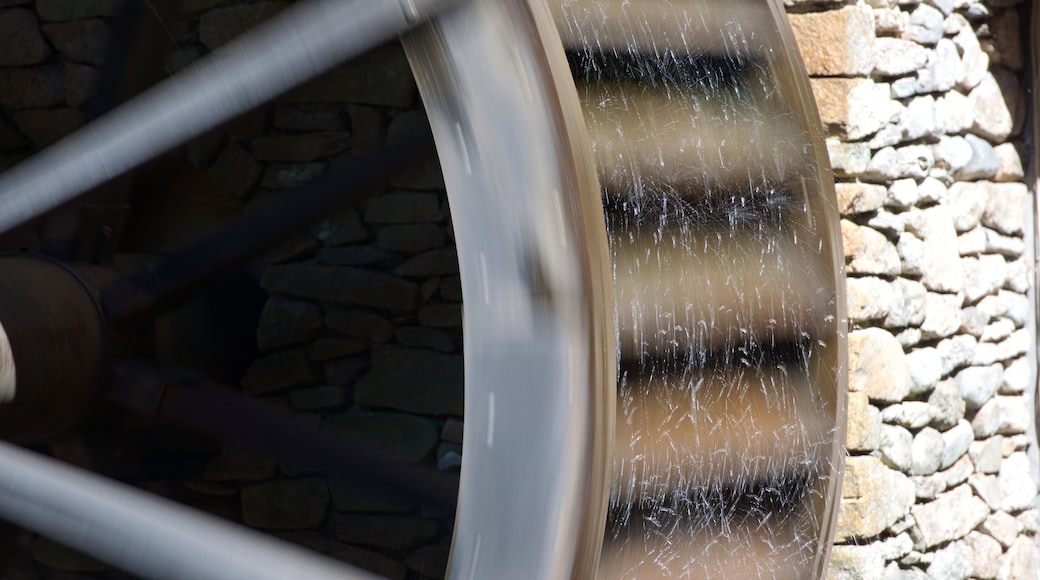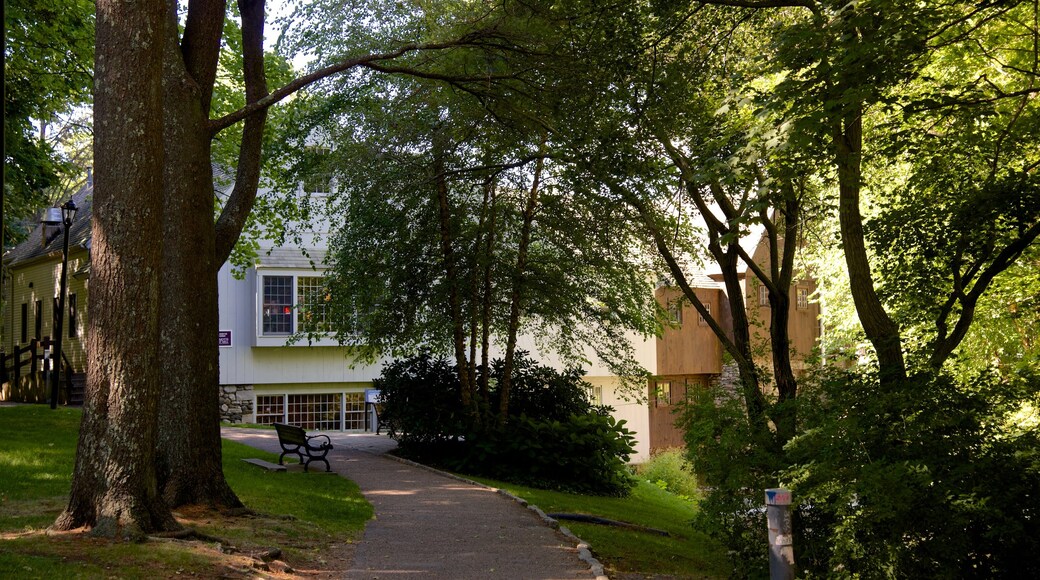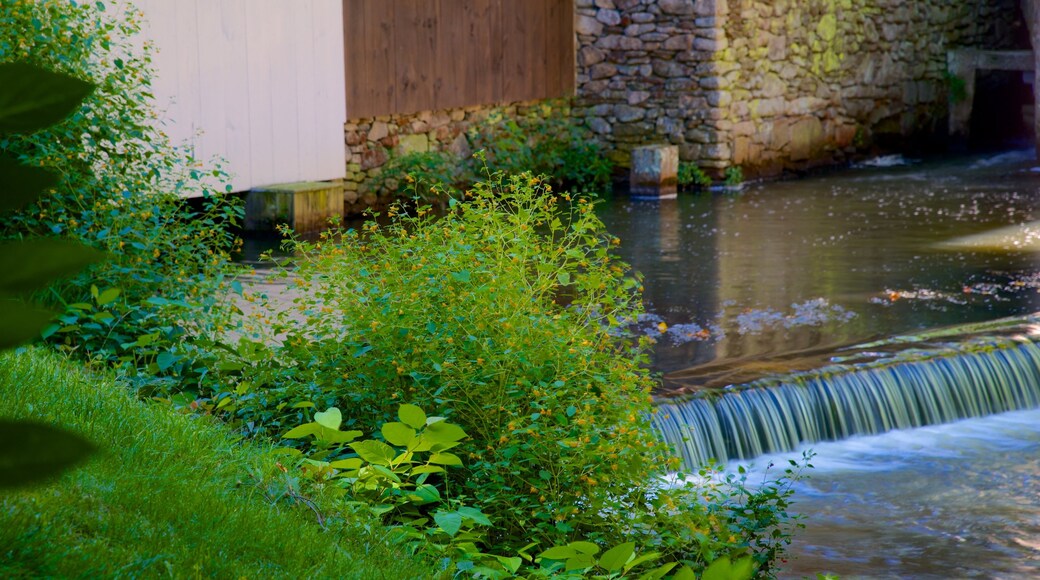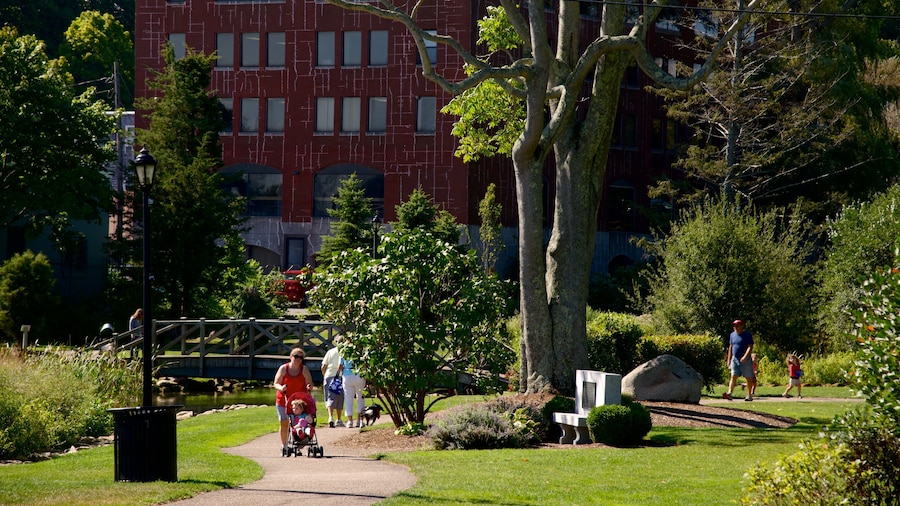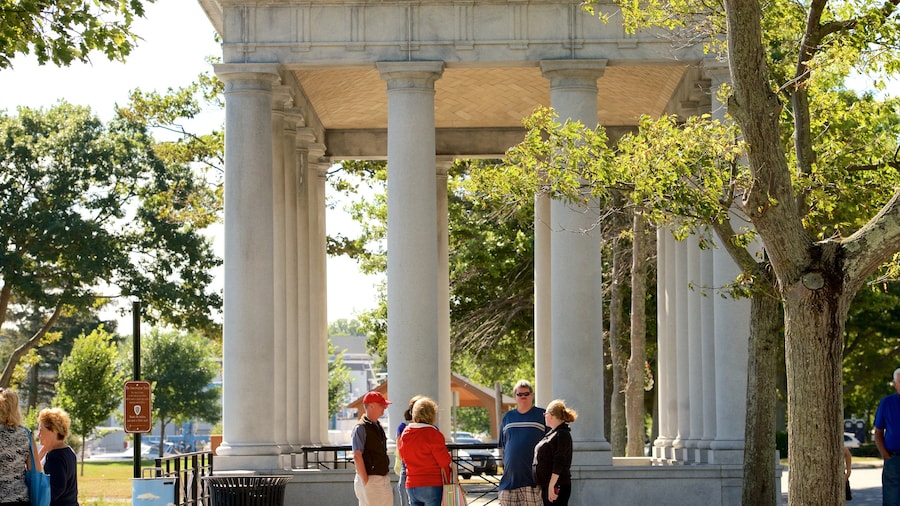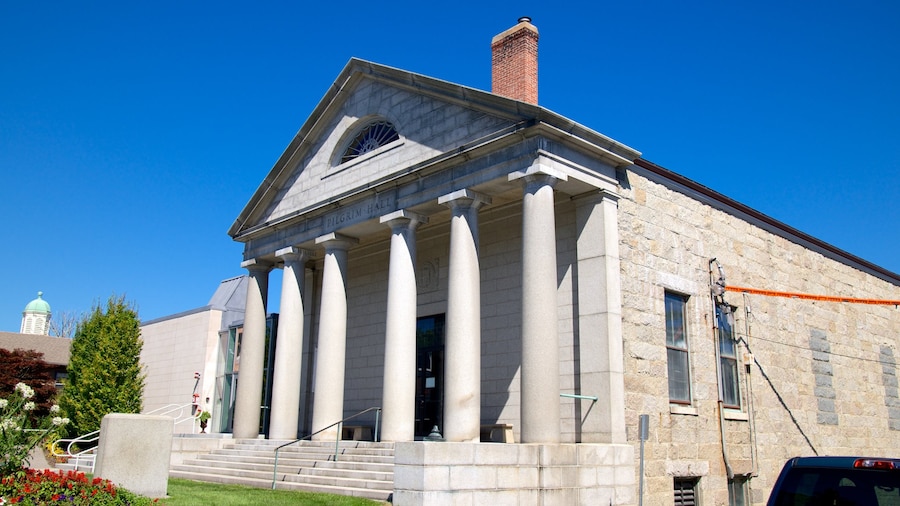Visit this handsome working mill to see why many visitors call this water-powered marvel their favourite attraction in Plymouth.
As you walk along Town Brook in Plymouth, stop to listen to the swishing sound as the water meets the wheel of the Plimoth Grist Mill. When it’s in operation, the ancient mill can make it easy to forget what century you’re in. Step inside the building to deepen your understanding of colonial labour and economics that relied on this technology. You’ll walk out with a true appreciation for how much work went into the Pilgrims’ survival.
Built in 1636 by John Jenney, the Plimoth Grist Mill was the third and most successful of its kind in Plymouth. While the original mill burned down in 1837, the version that stands in its place is a truly authentic reconstruction. View its mechanics and design, virtually identical to the one that America’s earliest residents used to grind corn into meal.
When you go inside the mill, observe the impressive power that the mill derives from the stream. Consider how this technology alleviated the Pilgrims’ struggle. At the museum shop, purchase some of the stone-ground cornmeal you see produced here to take home. You can order more online as well.
The mill sits against the property of the Jenney Museum, an 18th-century house that holds exhibits on the story of the Plimoth Grist Mill and of mill technology. A tour with the proprietor is considered by many to be a crucial part of visiting the mill. In full Pilgrim attire, he will regale you with a tale of how the Pilgrims fought for their religious freedom.
Visiting Plimoth Grist Mill is a wonderful way to spend part of your walk through Brewster Gardens. If you arrive by car, use the nearby parking lot. Check the museum website for updates on the changing slate of educational and interactive exhibits offered. If you happen to be at the site in spring, search the water around the mill for a rare sighting of the alewife fish, now dwindling in population.


